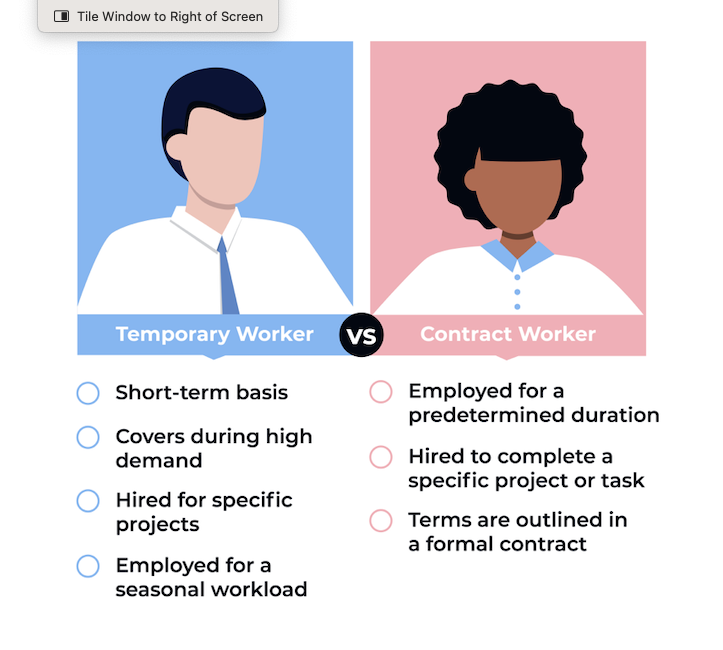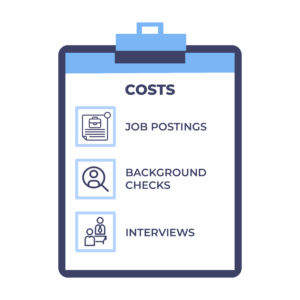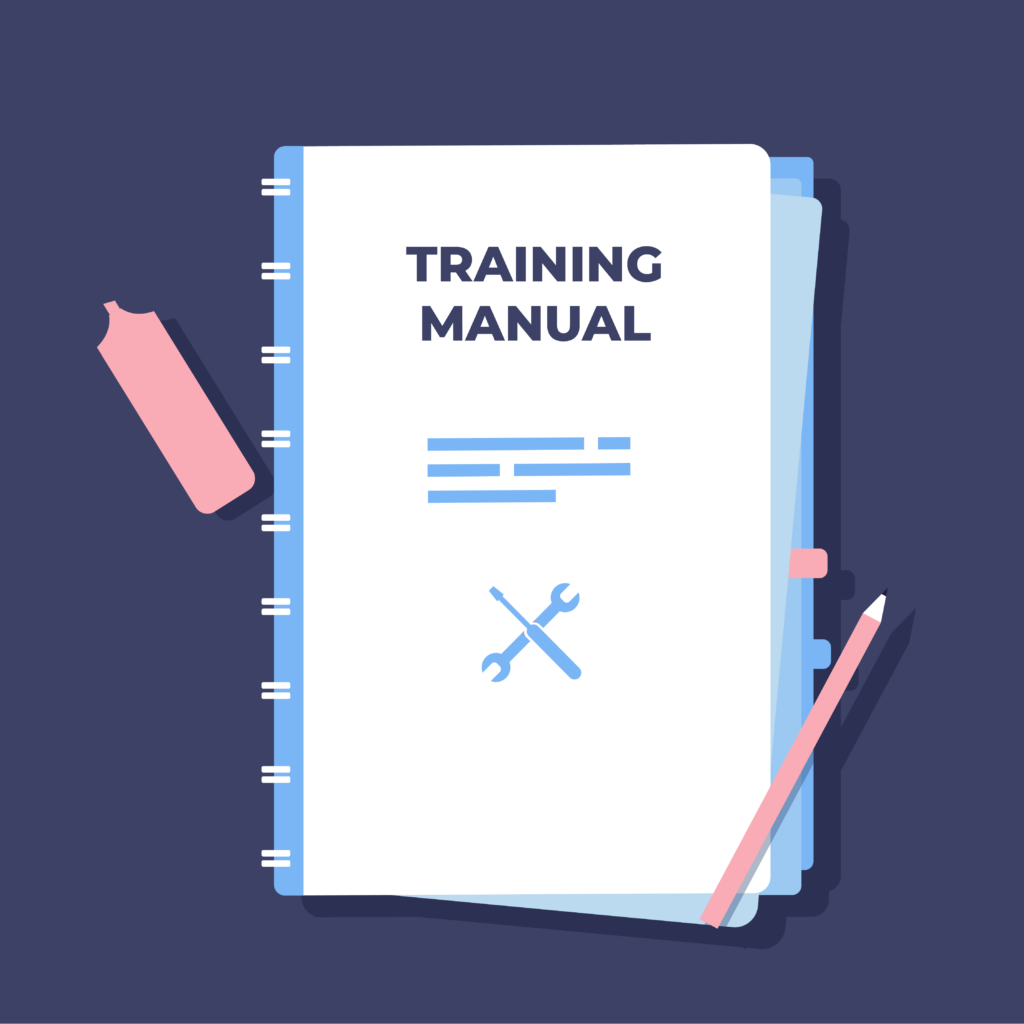What’s Inside?
- Working with Experts
- Adapting to Changing Business Demands
- Optimizing Expenses through Strategic Staffing
- Identifying Skill Gaps and Training Needs Within Your Organization
- Empowering Your Organization with a Comprehensive Staffing Plan
In a world where innovation and economic shifts occur at warp speed, having a solid plan is your way of preparing for whatever the market throws your way. A strategic staffing plan is more than just filling roles; it’s a well-thought-out map that ensures your team is ready for whatever curveballs the market throws at you. In this blog, we’re detailing all you need to know about strategic staffing plans and how to implement them into your workspace.
Working with Experts to Optimize Your Staffing Plan
Consultants and industry professionals bring not only a fresh perspective but also a wealth of knowledge to enhance your staffing strategy. Here are some of their top tips:
- Hiring Experts: Staffing solution providers are experts, possessing specialized knowledge in talent acquisition that surpasses the ordinary
- Insider Expertise: They navigate the intricate landscape of recruitment, mastering the nuances of finding ideal talent swiftly and efficiently.
- Technological Proficiency: Equipped with cutting-edge technology, they use advanced tools to streamline the hiring process, ensuring a smooth experience for your business.
- Data-driven Excellence: Harnessing the power of data analytics, they excel in identifying the most suitable candidates, facilitating informed decision-making.
- Market Intelligence: Their deep understanding of market trends and dynamics keeps your staffing strategy aligned with industry best practices.
- Effortless Hiring: Staffing solution providers simplify the hiring process, saving you time and effort while delivering optimal results.
- Adaptability: Whether dealing with sudden spikes in workload or specific skill requirements, these experts adapt swiftly, providing the flexibility your business needs.
- Path to Success: Partnering with them is your shortcut to staying ahead in the business game, ensuring your workforce is not only competent for today, but also well-prepared for future challenges.
More Flexibility: Adapting to Changing Business Demands
A flexible staffing plan allows companies to scale their workforce up or down based on current needs. One powerful way to introduce flexibility into a staffing plan is by incorporating a contingent workforce, a group of workers who are not permanent or regular employees of a company but are engaged on a temporary, contractual or project basis.
Here are some other terms to know:
- What is a Temporary Worker? Someone employed on a short-term basis, often to cover a specific period of high demand, project or seasonal workload.
- What is a Contract Worker? Someone engaged by a company for a predetermined duration to complete a specific project or task, typically under the terms outlined in a formal contract.
Case Study Highlighting the Success of Flexible Staffing Solutions
Several companies have successfully embraced flexibility to enhance their competitiveness and resilience. The example below shows how organizations can strategically utilize temporary, contract and contingent workers to navigate challenges and seize opportunities.
Case Study: Tech Innovator’s Agile Development Team
- The Problem: This cutting-edge tech company was racing against time in a fast-paced market. To keep up with the ever-changing landscape, they needed to supercharge their product development process.
- The Solution: The company brought in a squad of top-notch contract developers and designers, tailoring their team to fit different project phases. When the heat was on during intense development periods, they added temporary talent to boost their in-house crew.
- The Result: The team slashed time-to-market by a whopping 30%, letting the company unleash new features before the competition even knew what hit them. This flexible staffing strategy wasn’t just a time-saver; it was a money-saver too.
Hiring Costs: Optimizing Expenses through Strategic Staffing
Let’s explore the nuances of hiring expenses and how a thoughtful strategy can help minimize costs while maintaining high standards in recruiting top talent. We’ll delve into the key aspects of optimizing your budget and implementing effective cost-saving measures without sacrificing the quality of your talent acquisition process.
Traditional Hiring vs. Strategic Staffing Approach
When companies usually acquire new talent, there’s the old-school way, the traditional hiring route, and then there’s the new kid in town: strategic staffing.
- What is Traditional Hiring? The conventional hiring process often involves substantial upfront costs. From crafting job descriptions and posting openings on various platforms to conducting extensive interviews and background checks, the traditional approach can be resource-intensive and financially burdensome.
- What is Strategic Staffing? Embracing a strategic staffing approach involves reevaluating the entire recruitment process. It’s about identifying key areas for optimization and implementing strategies that align with the organization’s long-term goals. This shift allows businesses to focus on efficiency, cost-effectiveness and quality when acquiring new talent.
Detailed Breakdown of Hiring Costs
As businesses cast their nets in search of the perfect candidate, the costs incurred in advertising job openings can add up quickly. Whether through online platforms, traditional print media or industry-specific channels, understanding the financial landscape of job postings is crucial for organizations striving for both visibility and fiscal responsibility.
Let’s dive into some costs:
- Job Postings: Companies incur expenses for job postings, including fees for utilizing job boards, additional costs for featured listings, and investments in employer branding efforts.
- Background Checks: The costs related to background checks involve fees for third-party services, expenses for criminal record checks, and potential charges for credit checks if deemed necessary.
- Interviews: Companies invest in interviewing processes through expenses for software or tools, covering travel costs for both candidates and interviewers, and, if applicable, fees for renting venues for in-person interviews.
Some strategic approaches that not only optimize expenses but also enhance overall recruitment efficiency include:
- Employee Referrals: Employee referrals can be a cost-effective way to find qualified candidates. A robust employee referral program can positively impact both hiring costs and employee morale.
- Internal Talent Development: Investing in the development of existing talent within the organization can be a strategic move. It fosters internal growth, and upskilling can lead to significant savings in recruitment costs.
Training Costs: Strengthening Workforce Skills while Minimizing Expenses
There are various expenses associated with training initiatives, from designing course materials and securing training facilities to compensating trainers. Understanding these costs is foundational to developing a strategic and cost-effective approach to workforce development.
Fixed Expenses: Reducing Overhead Costs with Strategic Staffing Solutions
Maintaining a full-time workforce entails a range of fixed expenses, from leasing office space to investing in equipment and utilities. Let’s examine some of the financial implications tied to these fixed costs.
- Remote Work and Shared Office Spaces: In response to the evolving nature of work, businesses are reevaluating traditional office setups. By embracing remote work, organizations can significantly reduce the need for extensive office space, while shared office spaces offer a flexible and cost-effective solution for businesses looking to optimize their physical footprint.
- Access Specialized Skills Without Fixed Expenses: Businesses can access specialized skills without incurring the burden of maintaining a full-time, in-house team by partnering with staffing agencies. Organizations gain the flexibility to scale their workforce based on project needs, reducing fixed expenses associated with unused or underutilized resources.
- Case Studies Showcasing Successful Fixed Expense Reduction: Real-world examples speak volumes about the effectiveness of strategic staffing solutions in reducing fixed expenses. Here are some examples:
Case Studies Highlighting the Success of Reducing Overhead Costs
Let’s dive into a compelling exploration of organizational triumphs, spotlighting the strategic prowess of reducing overhead costs. From innovative cost-cutting measures to streamlined operational efficiencies, these real-world examples illustrate how businesses have navigated the complex landscape of overhead expenses, achieving remarkable success and unlocking new possibilities for growth.
Case Study 1: Financial Institution’s Dynamic Talent Pool
- The Problem: A financial institution found itself juggling the costs of keeping a full-time compliance team, and it wasn’t always smooth sailing.
 The unpredictable nature of regulatory work meant they had underused resources during quiet periods.
The unpredictable nature of regulatory work meant they had underused resources during quiet periods. - The Solution: Instead of having a full-time team on standby, the institution opted for a more flexible approach. They partnered with the agency, tapping into a dynamic pool of pre-screened compliance pros whenever needed. This way, they could scale up or down based on regulatory demands.
- The Result: With this strategic staffing switch, the financial institution slashed fixed expenses tied to a full-time compliance crew during slow times. They retained access to top-notch talent without the baggage of permanent hires. This move not only trimmed costs but also made the institution more agile in navigating the ever-changing regulatory landscape.
Case Study 2: Healthcare Provider’s Adaptive Staffing Solution
- The Problem: Picture a top-tier healthcare provider dealing with the ups and downs of keeping a consistent nursing squad.Thanks to the unpredictable nature of patient admissions, they had too many nurses during quiet hours and risked shortages during the busiest times.

- The Solution: Instead of sticking to a fixed nursing crew, the provider went for a more flexible solution. They teamed up with an agency, bringing in qualified nurses as needed. This way, they could adjust staffing based on patient numbers, seasonal quirks and specific unit demands.
- The Result: With this savvy staffing switch, the healthcare provider slashed fixed expenses tied to a full-time nursing team. They saved big by paying for nursing services only when the demand was high, ditching the constant pressure of a full-time staff. The flexibility brought in by the staffing agency ensured top-notch patient care while optimizing costs and keeping pace with the dynamic demands of healthcare.
Identifying Skill Gaps and Training Needs Within Your Organization
Before embarking on any training program, organizations must conduct a comprehensive analysis to identify skill gaps and training needs within their workforce. By pinpointing areas for improvement, businesses can tailor training initiatives to address specific challenges. Here are some ways to get the ball rolling:
- Data-Driven Insights: Use analytics and employee feedback to identify skill gaps.
- Collaborative Approach: Foster cross-departmental collaboration for a holistic understanding.
- Future-Ready Skills: Focus on skills aligned with industry trends and future needs.
- Continuous Adaptation: Monitor and adapt training programs dynamically.
- Agile Training with Incentives: Adopt agile methods and provide incentives for active participation.
Developing a Comprehensive Training Program for New Hires and Existing Employees
Creating a well-rounded and effective training program is instrumental in fostering a skilled workforce.

From onboarding processes to ongoing professional development, a carefully crafted training strategy contributes not only to employee satisfaction but also to organizational success.
Here are three steps to get there:
- Assessment and Goal Setting:Identify skill gaps through a needs assessment.
- Set clear training goals aligned with organizational objectives.
- Curriculum Design and Delivery:
- Develop a comprehensive, adaptable curriculum.
- Utilize diverse training methods to cater to various learning styles.
- Continuous Improvement:
- Implement a robust evaluation system for ongoing assessment.
- Gather feedback and adapt the program based on performance metrics and industry changes.
Empowering Your Organization with a Comprehensive Staffing Plan
Regularly evaluating and adjusting the staffing plan is essential for long-term success, ensuring it stays effective in a changing business landscape. A carefully designed staffing plan not only addresses immediate talent needs but also positions organizations for long-term resilience in an ever-evolving business landscape. Here’s how:
- Cost Optimization: Aligns workforce needs with business objectives for expense control.

- Operational Agility: Enables quick adjustments to changing workloads and market demands through scalable staffing.
- Access to Specialized Skills: Provides access to a diverse talent pool with specialized skills for specific projects or roles.
- Streamlined Recruitment Process: Accelerates hiring, reduces time and resources through partnerships with staffing experts.
- Industry Insights: Staffing professionals offer valuable industry knowledge, keeping organizations informed about trends and market dynamics.
- Pre-screened and Qualified Candidates: Collaboration yields access to pre-screened candidates, saving time in the selection process.
- Adaptability to Market Fluctuations: Flexible staffing plan enables swift responses to market changes, aligning the workforce with current business needs.
- Enhanced Decision-Making: Industry expertise contributes to well-informed decisions in talent acquisition, improving overall recruitment outcomes.
- Long-Term Resilience: Continuous evaluation and adjustment contribute to long-term organizational resilience.
- Competitive Talent Landscape: Leverage staffing experts for understanding the current talent landscape and attracting top-tier talent.
Power Up Your Workforce with Morgan Hunter – Your Strategic Staffing Partner
Are you looking to supercharge your organization with a game-changing staffing plan? We’ve got you covered. As a leading Kansas City staffing agency, we can work with you to evaluate your current workforce and staffing challenges – and create a strategic plan that helps you access the talent you need, while lowering your employment costs. Contact us today to learn more!
